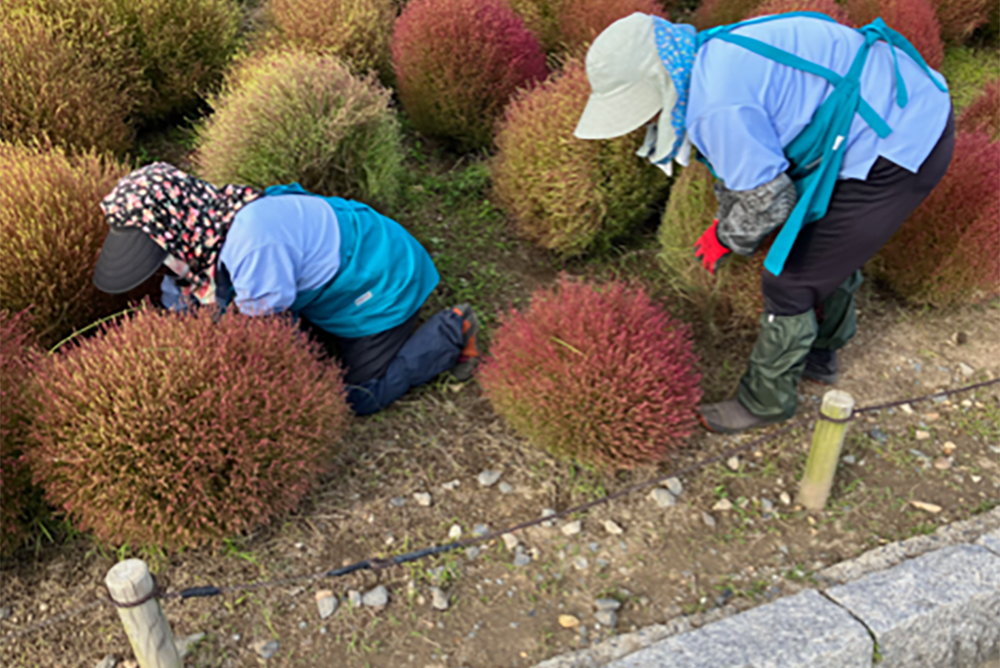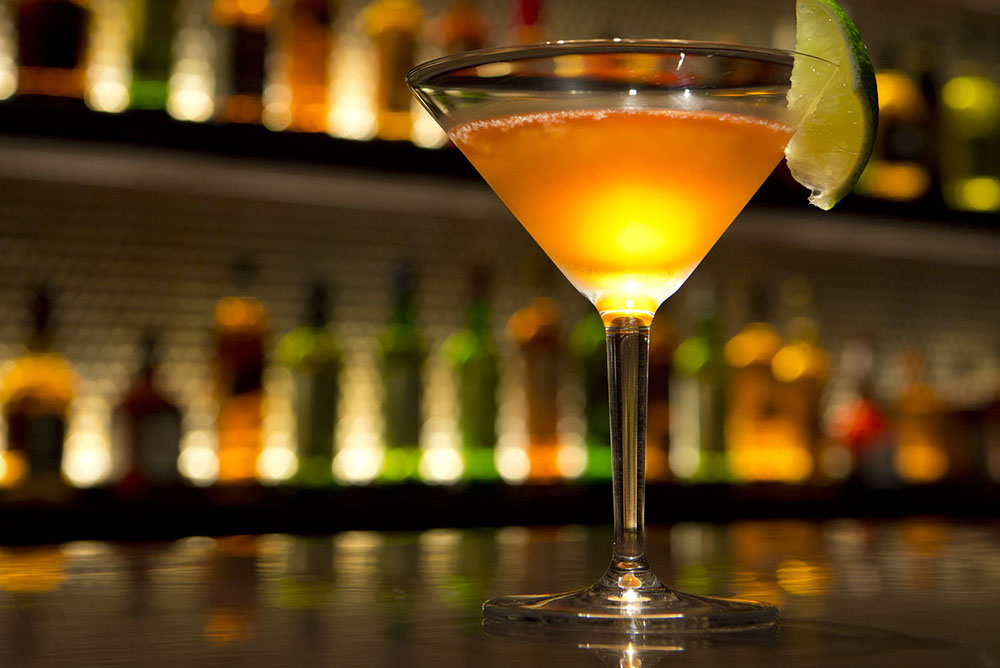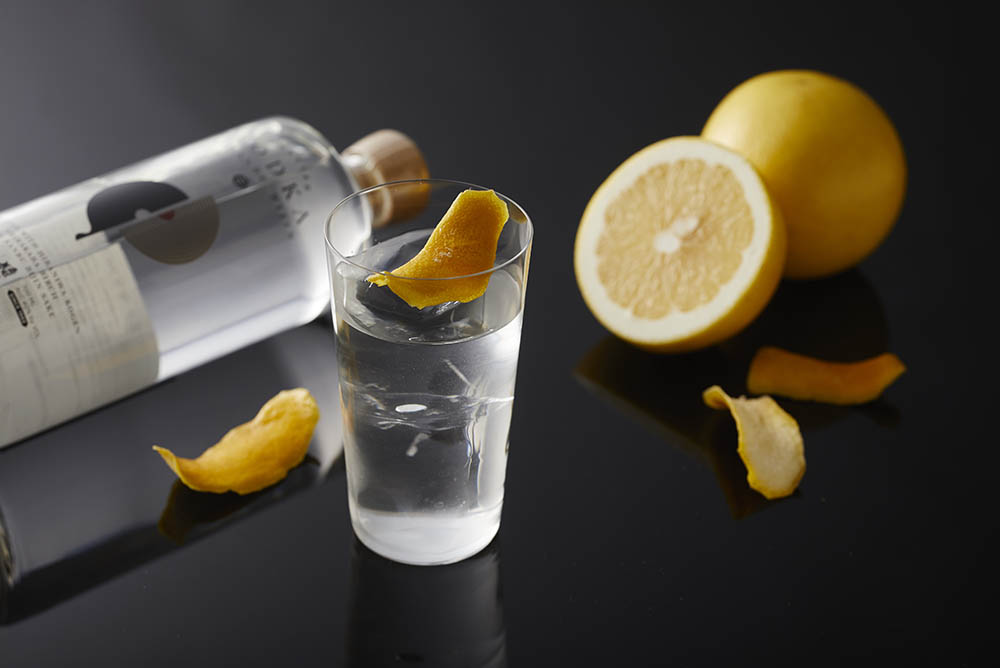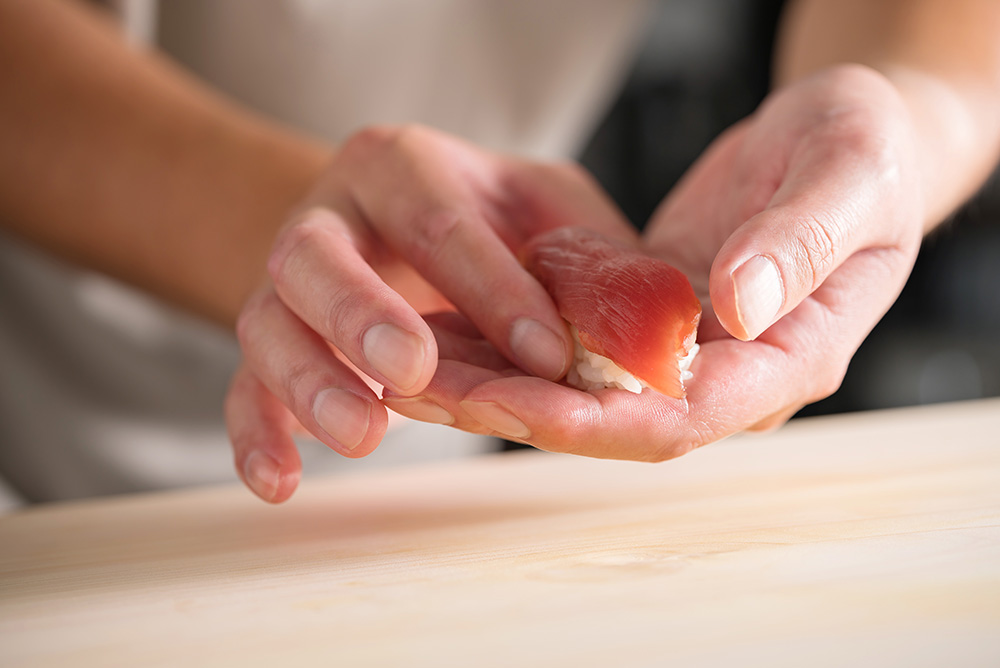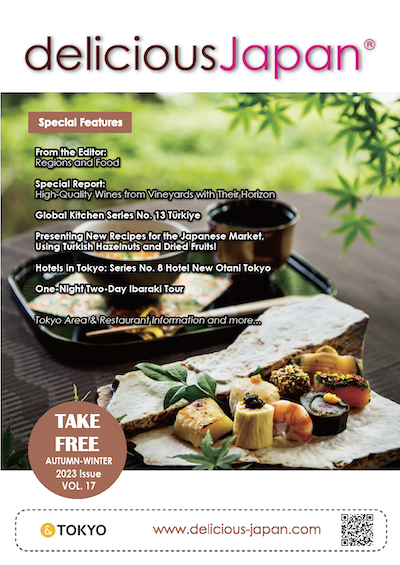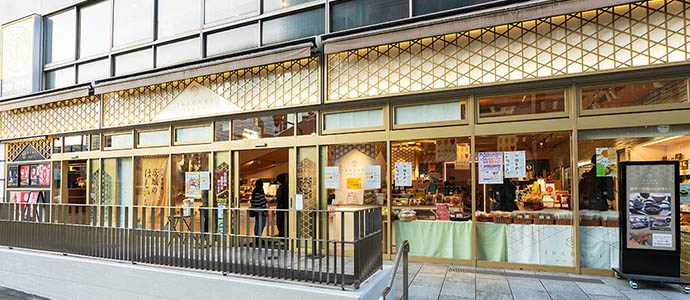
Sensational IBARAKI sense
Ibaraki prefecture is a glorious place to explore, and it takes many visits to even start to tap into its wealth of cuisine and products. Fortunately, this is now condensed into an easy visit to IBARAKI sense. The vast expanse of Ibaraki, an hour or two from Tokyo on the Joban train line, is captured by a convenient visit to IBARAKI sense, with an expansive and evolving selection of the many joys collected in one place.
A short walk from Yurakucho station’s Kyobashi exit, north a few short blocks along Sotobori-dori, turn right before the overpass. On the left corner, the broad brownish awning proclaims, “IBARAKI sense.”
Three areas within include a cozy BARA dining restaurant hidden behind the spacious shopping aisles, and a corner café, handy for a cup of coffee and the street view. Let’s start our virtual visit to Ibaraki.
BARA dining restaurant features a striking wall of grey Inada stone, quarried in the hills of Ibaraki. It faces a long counter, three tables, and a private room behind sliding doors of woven blond wood. An extensive English menu is on hand, and we explored four items, including the Strawberry Parfait and Mont Blanc Mound, which can be enjoyed in the BARA cafe.

Ibaraki Natto Gozen (¥1,290)
First, a classic lunch set sourced from Ibaraki’s abundant local (jidori) eggs, rich rice, and natto. The plump golden-yolked egg from either the Okukuji mixed in with koshihikari rice, a toothsome and flavourful rice from Daigo. Subtle at first, the rich egginess came through in a simple appeal. Two varieties of natto, in which the flavour of the black or white beans stood out, were dressed in hats of winter fresh Welsh onion slices. A bit of grated radish performed quiet guard duty on the side.
The purported backstory to the origin of natto is that in days of yore, the heat of the horse transporting bags of soybeans led to their in-sack fermentation. Far from being a messy loss, it proved rather tasty, and thus the natto industry was born.
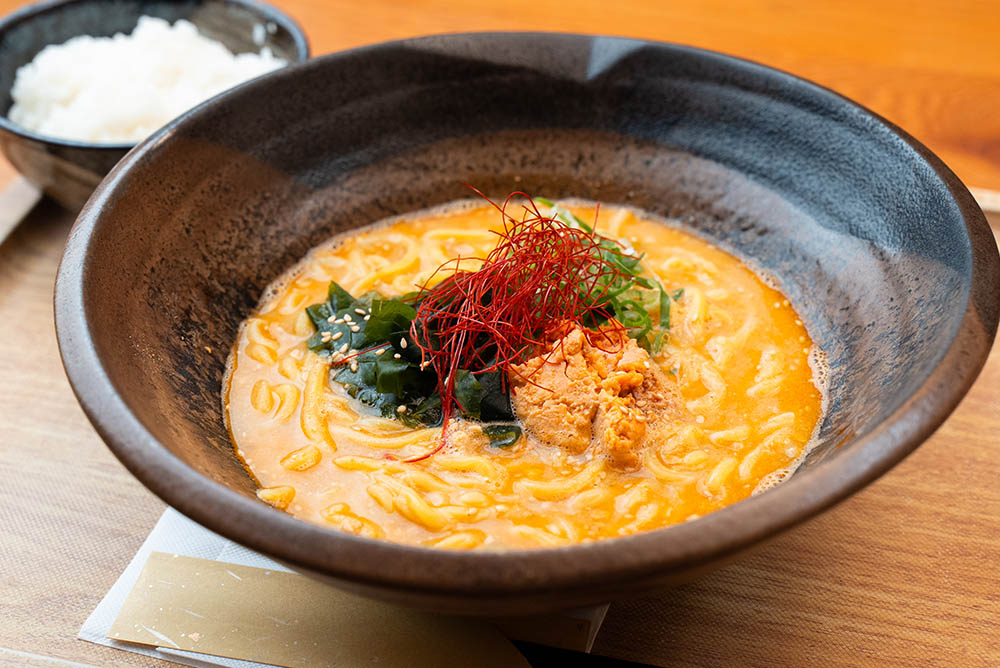
Marumitsu Ryokan's Monkfish Liver Ramen (¥1,200)
Next, a resplendently large bowl with thick white ramen noodles decorated with a visual feast of bright red crinkly chili threads, a slash of green wakame seaweed, and sliced Welsh onions. Swimming in a sumptuous broth, an intriguing orange lump lent a rich briny overtone, and proved to be the star of the menu: monkfish (anko) liver. An utterly bizarre flat and floppy fish of the sea, the monkfish has seven distinct sections that challenge chefs and households throughout the Ibaraki winter, where some 85-tons are hauled in annually.
Rich and earthly, the broth became a Nabewan Grand Prix winner. A comical video created by Bayashi displays the details at @bayashi.tiktok.
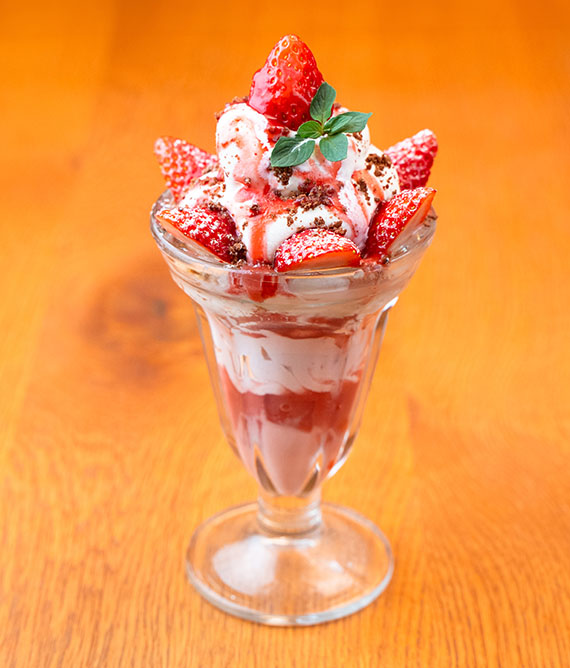
BARA cafe
This small corner cafe surveys the street scene outside. Coffee and desserts from the kitchen, including the statuesque Strawberry Parfait and the rotund Mont Blanc, promise a serene haven for a few moments. Take-out is also available.
Ibaraki Strawberry Parfait (¥1,980)
The sturdy pottery monkfish soup bowl bade farewell with the arrival of a red rocket ship-like parfait. Bursting with sturdy strawberries aboard, it put on quite a display. Far from being the usual silly, teenager sugar bait, this rather stately yet spirited creation overflowed with a spinning galaxy of crimson strawberries from the Ibaraki greenhouses. A sprig of bright green mint challenged the red and white berries and creme. Available separately in the BARA cafe.
The parfait architecture held the piquant berried roof aloft, supported by rich, not too sweet, creamy Ibaraki ice milk. Underneath, a main floor of sponge cake, then a carpet of pink yoghurt, and a narrow basement of gelatin cubes. Just a few of the 9,300 tons of the annual Ibaraki strawberry harvest provided the show.
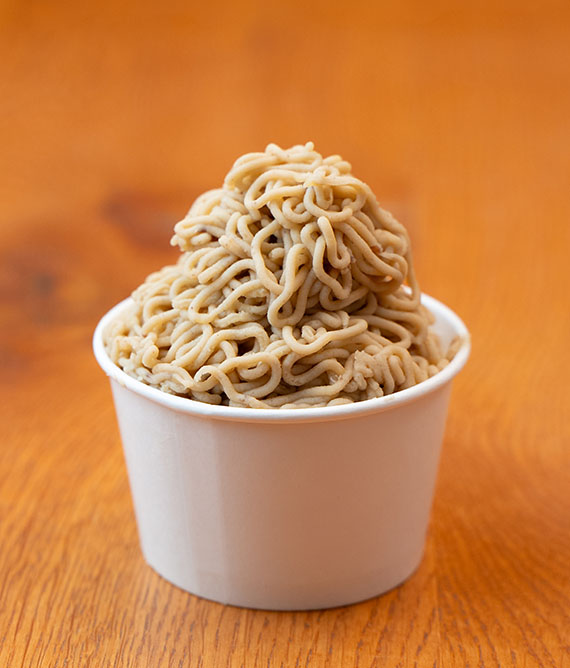
Kasama Chesnut Cup Mont Blanc (¥990)
Ibaraki’s chestnut autumn 3,670-ton harvest is nearly legendary from the perfect weather and soil, especially in Kasama. A comfort food of the autumn, numerous roasted chestnut stands appear outside grocery stores and in shopping venues throughout the country. A large handful of these nuts became a pureed noodlely mound resting atop simple sponge cake. The extraordinary hint of roasted chestnuts gradually developed into the perfect earthly, slightly sweet tone of autumn.
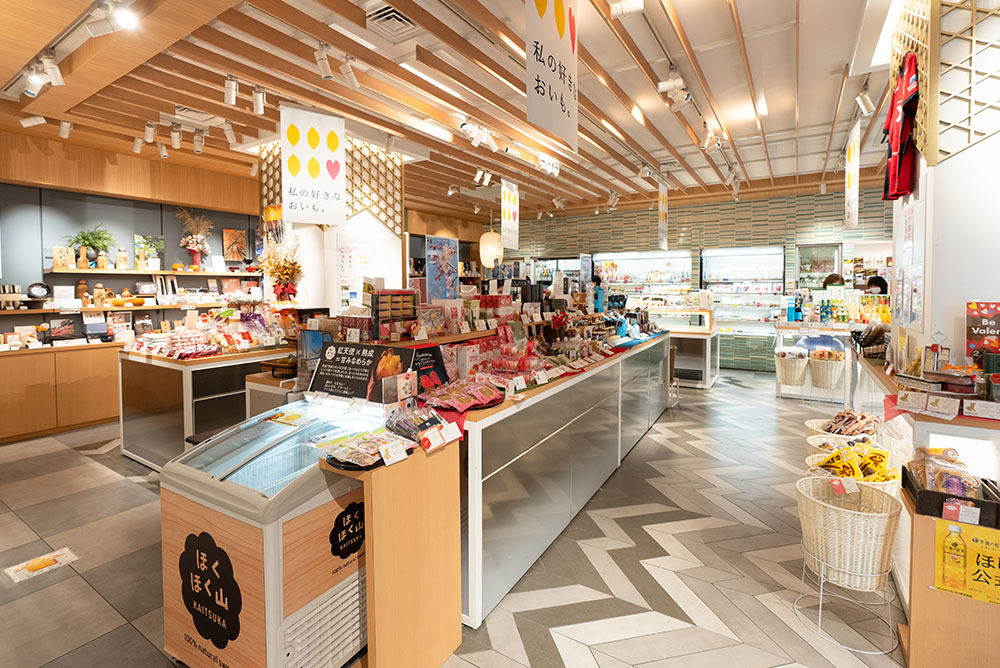
SENSE SHOP: Ibaraki sake sampling
Holding court in a back corner within the spacious SENSE SHOP, a small sample of sake can be had after purchasing ¥100 tokens. Ibaraki sake is a secret joy and discovery. The verdant rice fields of the prefecture yield such an abundance of rice, along with deep wells of artesian water filtered from seasonal rainfall and five headwaters that 38 sake breweries (shuzo) scattered throughout have answered the call. The fine selection of sake is a definite reason to visit IBARAKI sense, as it is scarce on the shelves of Tokyo. On the other hand, the popular “Nest Beer” by Hitachino is widely available.
From the taps, I selected a recognized label from Buyu Shuzo with a charming drawing depicting a rice harvesting lassie in the mountains. This is a confident sake, rich and deep, with a long-lasting tail that paints a picture of broad rice fields near mountain slopes. The second sample uses a favourite rice variety, the gohyakumangoku. This was a lighter flavour and was as pleasant as an autumn breeze through the chestnut forests. The sake displays housed the very difficult to find sake of Sudo Honke. Established by samurai in 1141, the current president is the 55th generation president of the oldest sake shuzo (brewery) in Ibaraki, and the oldest still active in Japan.
SENSE SHOP is quite an adventure, displaying an absorbing array of crafts, agriculture, fishing, and livestock of Ibaraki, often featured in store events. Seasonal products include the venerable dried sweet potato strips (hoshiimo), a simple, unprocessed traditional oddity that is surprisingly satisfying, and full of nutty, earthly overtones. Some had escaped the sunny skies and sea breezes of winter to be packaged into several varieties, each with its own farm and story to tell.
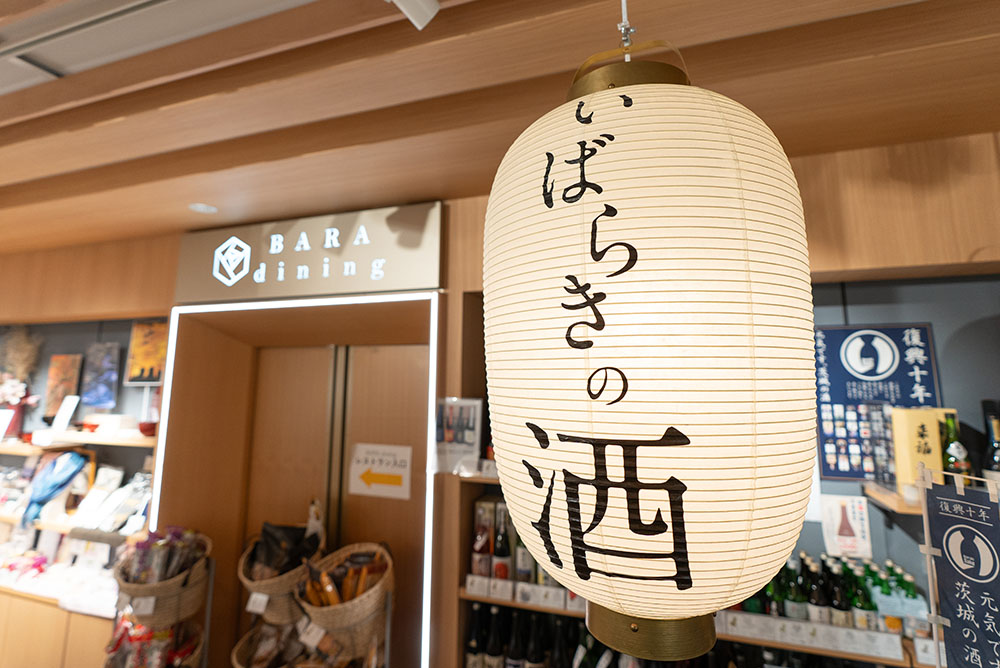
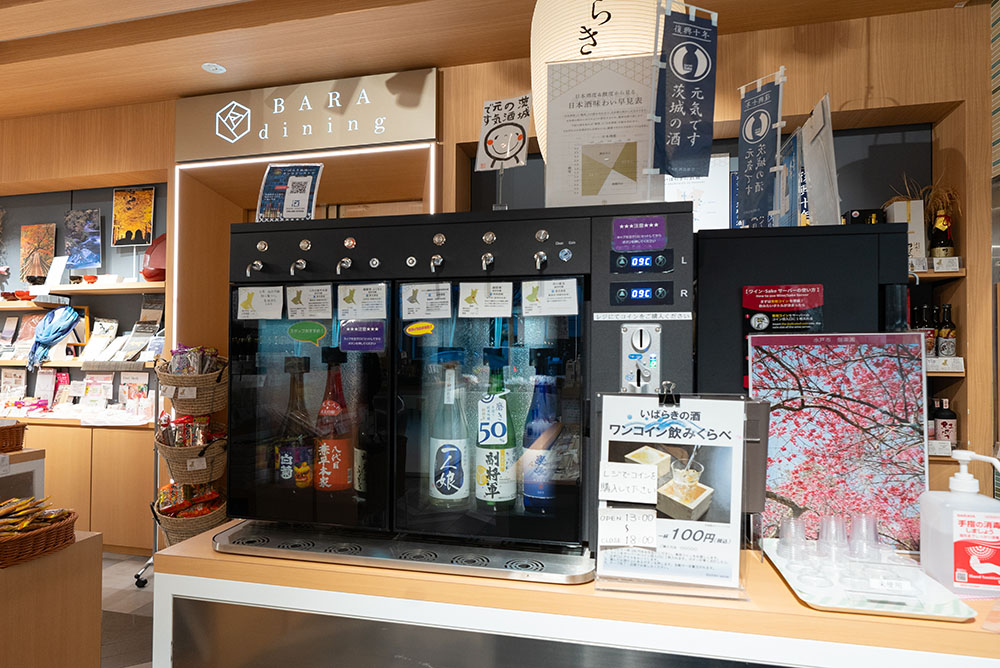
I selected five items to entertain my home kitchen with.
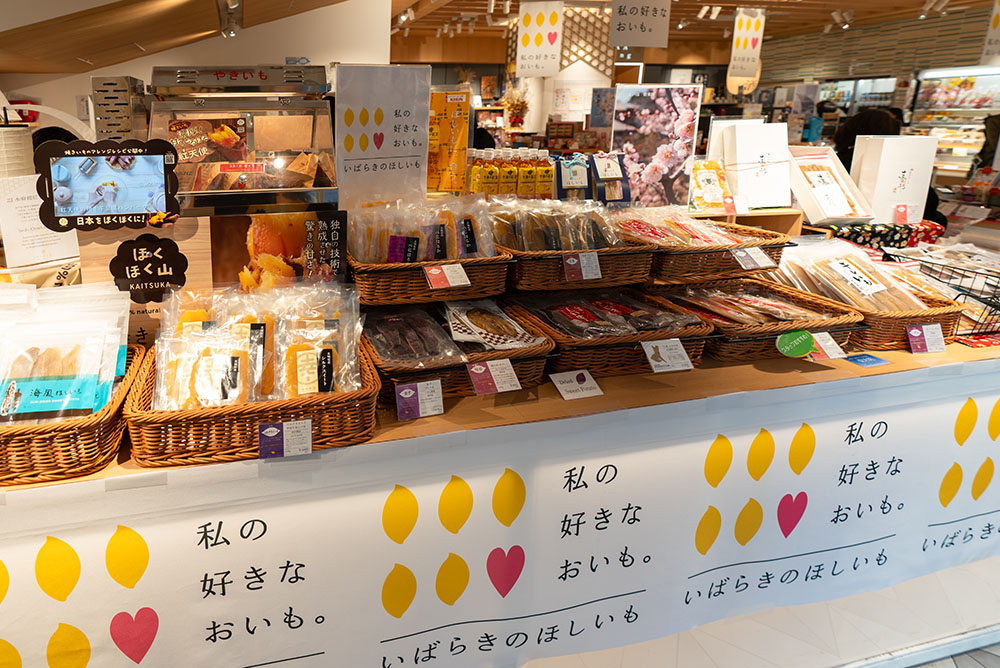
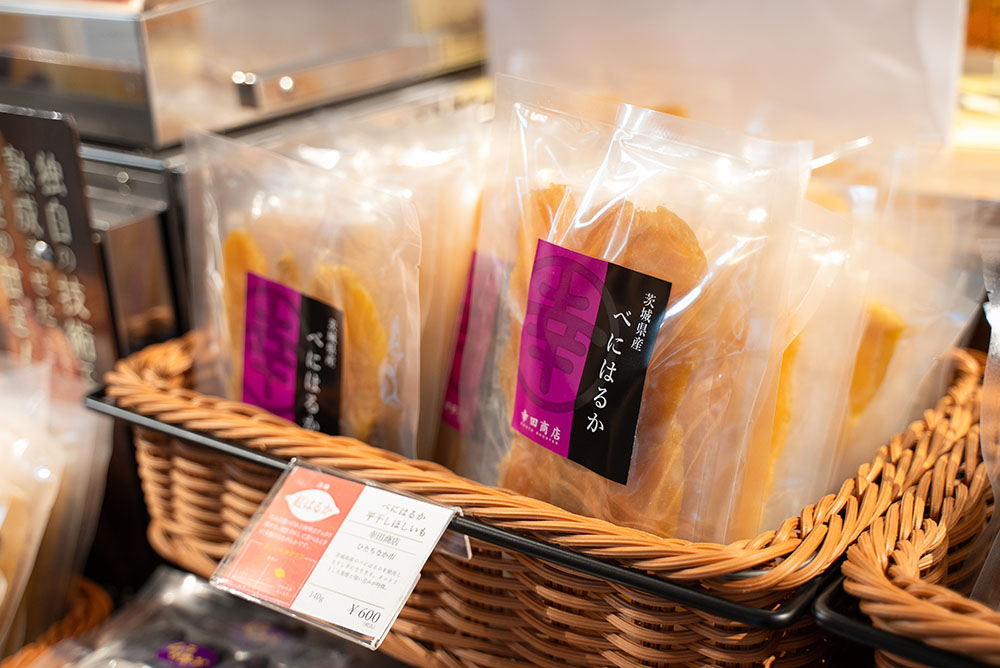
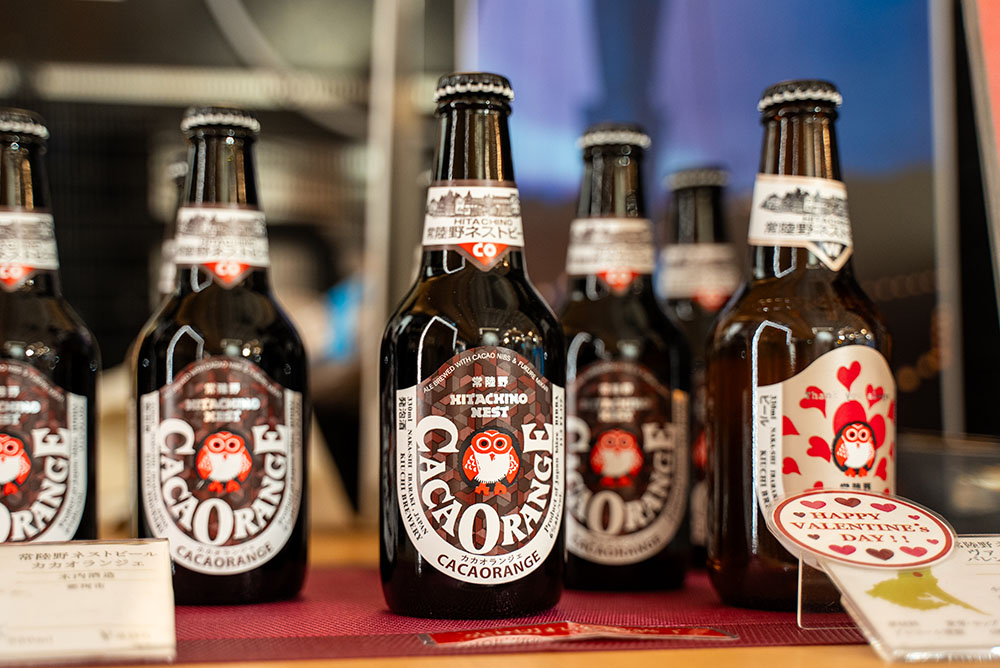
Conclusion
IBARAKI sense remains a treasure to anyone who has or will visit the vast mountains, plains, lakeside, and Pacific Ocean beaches of Ibaraki. Reopened in 2018, it continues to offer “sensible” goods and products. The staff are congenial and helpful. Whilst most items are self-evident, some are marvelous mysteries.
My plan is to soon return for the gorgeous cedar wood tissue box, some of the handcrafted bowls, and have set my sights on that Sudo Honke sake. This is now bound to be my regular stop when in the Yurakucho/Ginza neighborhood. A very sensible find, indeed.
IBARAKI sense
https://ibaraki-sense.com/
Open Hours

